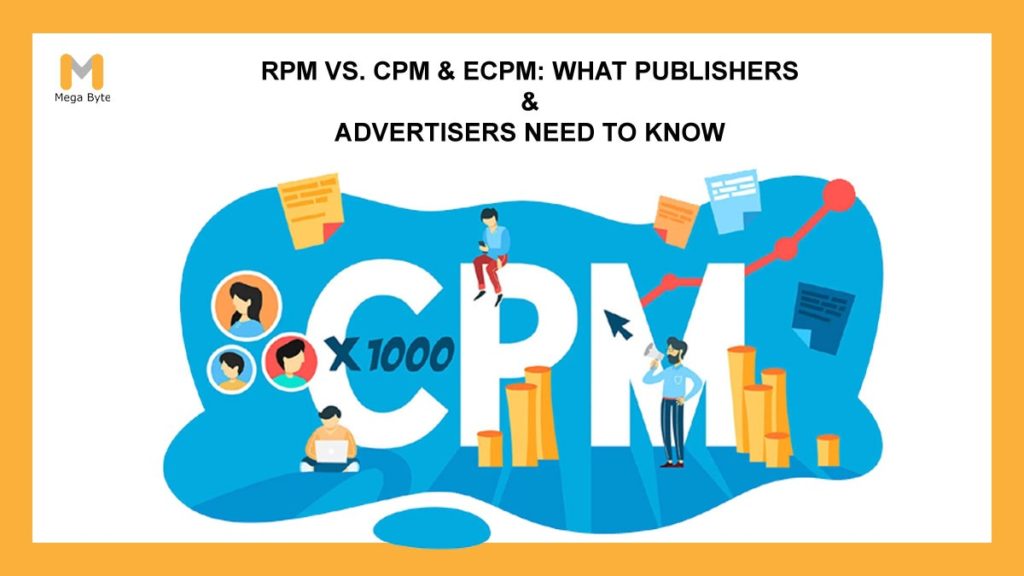Befuddled about CPM, RPM, and eCPM? Realize what these abbreviations mean, where they fit into the paid media environment, and how they are determined.
Three, specifically, are utilized a great deal in media purchasing:
- CPM.
- eCPM.
- RPM.
In self-serve paid media stages like Google Ads or Facebook Ads, most brands and publicists consider things as far as PPC, or pay-per-click: when a client clicks, the sponsor pays. It doesn’t depend on the CPM model at its bleeding edge, so terms like RPM vs CPM may be confounding from the outset to publicists who have just done PPC. These estimations are all the more normally utilized in automatic advertisement purchasing, yet they can likewise enable you “to level” expenses to comprehend what one channel costs comparative with another.
To demystify the abbreviations and where they fit into the paid media environment, we should take a gander at each kind, and a few models.
One thing to remember with media cash is there are two gatherings included:
The sponsor who is making the media buy.
The distributers, which are the sites really demonstrating the promotions.
The abbreviations that skim around apply to these two explicit gatherings.
What Is CPM?
CPM means “cost per 1,000 impressions.”
It’s the dollar sum a sponsor pays to show their advertisement multiple times.
Note this is a sponsor metric, not a distributer one. As it were, it’s what a publicist pays for their promotion to show. It’s not what a site wins when they show the promotion multiple times. (That is RPM, which we will cover quickly.)
Ascertaining CPM follows a basic recipe:
RPM vs CPM vs eCPM: What Do These Paid Media Abbreviations Mean?
This separates the expense for a solitary impression, and afterward duplicates it by 1,000 to get the CPM. CPM can likewise assist you with understanding the overall estimation of crowds inside a stage like Facebook when you see them close to one another.
Here’s a case of a Top of Funnel (along these lines, more extensive focusing on), Middle of Funnel (warm crowd focusing on), and Bottom of Funnel (hot possibilities/site guests) CPMs.
Effectively oversee and advance your Google, Microsoft, and Facebook accounts with Adzooma. The base pipe clients are not just a littler pool a brand is attempting to reach, but at the same time they’re probably going to purchase – and the various publicists are presumably attempting to focus on those equivalent individuals. The gracefully is low, and request is high, and you see costs heighten likewise.
What is eCPM?
You may now be pondering: what occurs in the event that I do a huge media purchase that utilizes a lot of various offering models?
How might I comprehend the CPM comparative with my general objectives?
This is the place eCPM comes in.
Suppose you have some CPM purchases, however you likewise have a portion of your media purchase going towards CPA or Cost-Per-Click based expenses. Since the enhancements are diverse for each kind, there may not appear to be a shared factor to comprehend that everything up cost.
eCPM or “viable CPM,” accomplishes this.
It changes over non-CPM getting tied up with a CPM figuring so you can comprehend what you’re “viably” (see?) paying in CPM. The count is the equivalent, yet the “e” reference signifies it’s not really a fixed value model like a straight CPM purchase through a distributer would be.
So suppose you had 85,000 impressions in a Google Ads PPC battle, and you paid $20,000. Utilizing a similar computation as above, you would get a CPM of $23.53. eCPM will much of the time be higher than fixed CPM in more straightforward reaction channels like CPC or CPA crusades since it’s a higher-esteem activity you’re pursuing from clients.
What Is RPM?
Not at all like CPM, RPM is a distributer side measurement. It’s an estimation of how much a distributer (or site) is procuring for each multiple times it shows a promotion. Basically, it’s the rate at which they’re bringing in cash – so it’s a significant measurement!
The condition will look natural since everything you’re doing is trading out the promoter metric of cost for the distributer metric of profit:
Page RPMs
Sites and distributers may gauge their RPM more explicitly than simply by and large impressions to get further experiences. For instance, perhaps they have an enormously dealt landing page and they need to comprehend the income explicit to that.
They would then be able to utilize a similar RPM recipe, however apply it to that page by just computing the profit and impressions from that. This can enable distributers to comprehend what their most important pages are, and furthermore their more fragile entertainers they might need to accomplish some work on.
Meeting RPMs
This is marginally extraordinary, in that the worth is coming down to site meetings, and not really the general advertisement impressions. As such, it shows the income per meeting on the site – progressively like estimating the estimation of a guest versus a page stacking and demonstrating a promotion.
In this count, you’re trading out advertisement impressions for meetings, similar to this:
RPM vs CPM vs eCPM: What Do These Paid Mediac Abbreviations Mean?
On the off chance that you just work in PPC marketing, you might be thinking about whether you have to know these truncations when you’re dissecting so much information.
Consider this: it shouldn’t be excessively difficult for you to comprehend this biological system.
In case you’re pursuing a high-dollar CPC with a long buy cycle, understanding cost comparative with what you’re getting is a piece of being a strong media chief. In long deals cycles, the top and mid-pipe stage can keep going quite a while, and you need to gauge the expense of a high-dollar direct reaction condition versus a bigger scope, less expensive choice.
Keep learning: 10 On-Site Technical SEO Factors To Assess In An SEO Audit


